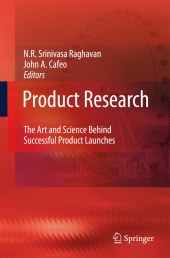 Neuerscheinungen 2014Stand: 2020-02-01 |
Schnellsuche
ISBN/Stichwort/Autor
|
Herderstraße 10
10625 Berlin
Tel.: 030 315 714 16
Fax 030 315 714 14
info@buchspektrum.de |

John A. Cafeo, N. R. Srinivasa Raghavan
(Beteiligte)
Product Research
The Art and Science Behind Successful Product Launches
Herausgegeben von Raghavan, N. R. Srinivasa; Cafeo, John A.
2009. 2014. xii, 305 S. 235 mm
Verlag/Jahr: SPRINGER NETHERLANDS; SPRINGER 2014
ISBN: 9400791046 (9400791046)
Neue ISBN: 978-9400791046 (9789400791046)
Preis und Lieferzeit: Bitte klicken
7. 1. 1 Background Uncertainty can be considered as the lack of adequate information to make a decision. It is important to quantify uncertainties in mathematical models used for design and optimization of nondeterministic engineering systems. In general, - certainty can be broadly classi?ed into three types (Bae et al. 2004; Ha-Rok 2004; Klir and Wierman 1998; Oberkampf and Helton 2002; Sentz 2002). The ?rst one is aleatory uncertainty (also referred to as stochastic uncertainty or inherent - certainty) - it results from the fact that a system can behave in random ways. For example, the failure of an engine can be modeled as an aleatory uncertaintybecause the failure can occur at a random time. One cannot predict exactly when the engine will fail even if a large quantity of failure data is gathered (available). The second one is epistemic uncertainty (also known as subjective uncertainty or reducible - certainty) - it is the uncertainty of the outcome of some random event due to lack of knowledge or information in any phase or activity of the modeling process. By gaining information about the system or environmental factors, one can reduce the epistemic uncertainty. For example, a lack of experimental data to characterize new materials and processes leads to epistemic uncertainty.
I: Innovation and information sharing in product design: Improving Intuition in Product Development Decisions, by Jeffrey Hartley; Design Creativity Research, by Amaresh Chakrabarti; User Experience-Driven Wireless Services Development, by Jee Y. Park and Giridhar D. Mandyam; Integrating Distributed Design Information in Decision-based Design, by Justin A. Rockwell, Sundar Krishnamurty, Ian R. Grosse, Jack Wileden; II: Decision making in engineering design: The Mathematics of Prediction, by George A. Hazelrigg; A Study of Simulated Decision-Making in Preliminary Vehicle Design, by Joseph A. Donndelinger, J. A. Cafeo, and R. L. Nagel; Dempster-Shafer Theory in the Analysis and Design of Uncertain Engineering Systems, by S. S. Rao and Kiran K. Annamdas; Role of Robust Engineering in Product Development, by Rajesh Jugulum; Distributed Collaborative Designs: Challenges and Opportunities, by Abhijit Deshmukh, Timothy Middelkoop, and Chandrasekar Sundaram III: Customer driven product definition: Challenges in Integrating Voice of the Customer in Advanced Vehicle Development Process - A Practitioner´s perspective, by Srinivasan Rajagopalan; A Statistical Framework for Obtaining Weights in Multiple Criteria Evaluation of Voices of Customer, by R P Suresh and Anil K Maddulapalli; Text mining of Internet content: The bridge connecting product research with customers in the digital era, by S.Shivashankar, B. Ravindran, N.R.Srinivasa Raghavan; A Combined QFD and Fuzzy Integer Programming Framework to Determine Attribute levels for Conjoint Study, by Malay Bhattacharyya and Atanu Chaudhuri; IV: Quantitative methods for product planning: Project Risk Modelling and Assessment in New Product Development, by Jian-Bo Yang, Dawei Tang, Dong-Ling Xu, Kwai-Sang Chin; Towards Prediction of Nonlinear and Nonstationary Evolution of Customer Preferences using Local Markov Models, by Satish T.S. Bukkapatnam, Hui Yang, Foad Modhavi; Two period product choice models for commercial vehicles, by Atanu Chaudhuri and K.N Singh. Index


